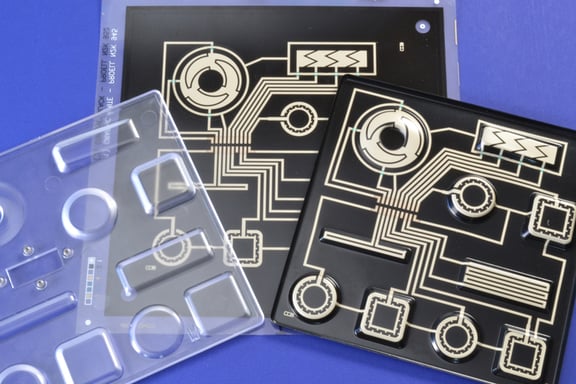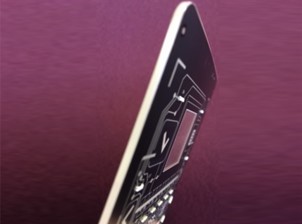What are In-Mold Electronics?
In-mold electronics (IME) refers to a manufacturing process that integrates electronic circuitry into a molded plastic component. By combining traditional injection molding techniques with printed electronics, IME eliminates the need for separate circuit boards, connectors, and cables, resulting in sleek and seamless HMI designs. The conductive traces, touch sensors, and other electronic components are directly integrated into the surface of the plastic, offering numerous advantages over conventional approaches.
Why the Surge in Popularity?
The rising popularity of in-mold electronics can be attributed to several key factors. First, the demand for compact and aesthetically pleasing HMIs is on the rise. In-mold electronics enable the creation of sleek, low-profile interfaces that seamlessly blend with the overall product design. This integration enhances user experience and augments the perceived value of the end product.
Secondly, the elimination of additional components like circuit boards and connectors simplifies assembly and reduces the overall manufacturing cost. The streamlined production process enables faster time-to-market, making IME an attractive option for companies seeking to meet tight deadlines and gain a competitive edge.

Benefits of In-Mold Electronics
IME technology offers several benefits to the printed electronics industry, including a more lightweight design, lower material and production costs, and a smaller environmental footprint. More specifically, it provides the following advantages over traditional electronics:
Smaller, more lightweight design: IME combines sensors, LEDs, connectors, and circuitry all on a functional plastic form, eliminating the need for old-style bulky printed circuit boards. This innovative technology offers the same functionality with up to a 70% reduction in weight, which opens countless possibilities for products that use IME.
Design optimization: With a more flexible design, IME technology eliminates the dead space that is needed to allow room for wires and connectors. Available in both 2D and 3D forms, it offers a wide range of design options for capacitive switches with high flexibility regarding design and graphic artwork.
Lower costs: Another advantage of this technology is its lower production costs. The assembly is more automated than other user interface technologies and requires fewer raw materials. Additionally, it provides a single connection point, eliminating the need to add wires behind the console. Altogether, IME can save as much as 30% on costs.
Manufacturing Process
The manufacturing process of in-mold electronics involves several key steps:
Design and Prototyping: The process begins with careful design and prototyping of the electronic circuitry, touch sensors, and other components that will be embedded into the plastic surface. Collaboration between industrial designers, electrical engineers, and material specialists is crucial at this stage.
Mold Fabrication: Next, a custom mold is created to accommodate both the plastic part and the electronic components. The mold must be designed to ensure proper alignment and electrical functionality.
Material Selection: Selecting the right materials is critical for successful IME. The plastic resin used must possess the desired mechanical and electrical properties. Additionally, conductive inks and films compatible with the molding process are chosen for the circuitry.
Printing and Lamination: The conductive traces and other electronic components are printed onto a substrate using specialized printing techniques. These printed layers are then laminated onto the plastic substrate within the mold.
Injection Molding: Once the printed layers are in place, the plastic resin is injected into the mold, encapsulating the circuitry. Care must be taken to ensure that the plastic flows uniformly around the components, without damaging the delicate electronics.
Demolding and Finishing: After the plastic has cooled and solidified, the molded part is removed from the mold. Further finishing processes, such as surface texturing, coating, and assembly of additional non-electronic parts, can be performed.

Common Design Mistakes
While in-mold electronics offer exciting possibilities, there are a few common design mistakes that one should be aware of:
Insufficient Design for Manufacturability: Failing to consider manufacturing constraints early in the design phase can lead to issues during the injection molding process. Collaboration between design and manufacturing teams is crucial to ensure proper tooling, adequate wall thickness, and proper alignment of the electronic components.
Inadequate Heat Dissipation: Concentrated heat from the electronic components can affect the performance and longevity of the in-mold electronics. Incorporating appropriate heat dissipation mechanisms, such as thermal vias or heat sinks, is essential to prevent overheating.
Lack of Mechanical Durability: In-mold electronics must withstand the rigors of daily use. Neglecting to consider mechanical aspects, such as proper sealing, flexibility, and resistance to impact and abrasion, can lead to premature failure or compromised performance.
Suboptimal Touch Sensor Design: Since touch sensors are a common feature in HMIs, designing them with precision is crucial. Inadequate placement, insufficient sensitivity, or poor calibration can result in a less-than-optimal user experience.
In-mold electronics present a thrilling frontier in HMI design, combining functionality, aesthetics, and cost-effectiveness. By integrating electronic circuitry directly into molded plastic components, IME is reshaping the landscape of product development. Working with a manufacturing partner who understands the intricacies of IME will help you avoid common design mistakes and enable you to unlock the full potential of this game-changing technology.



.jpg?width=176&height=56&name=MR_associatedNetwork_logo%20(1).jpg)